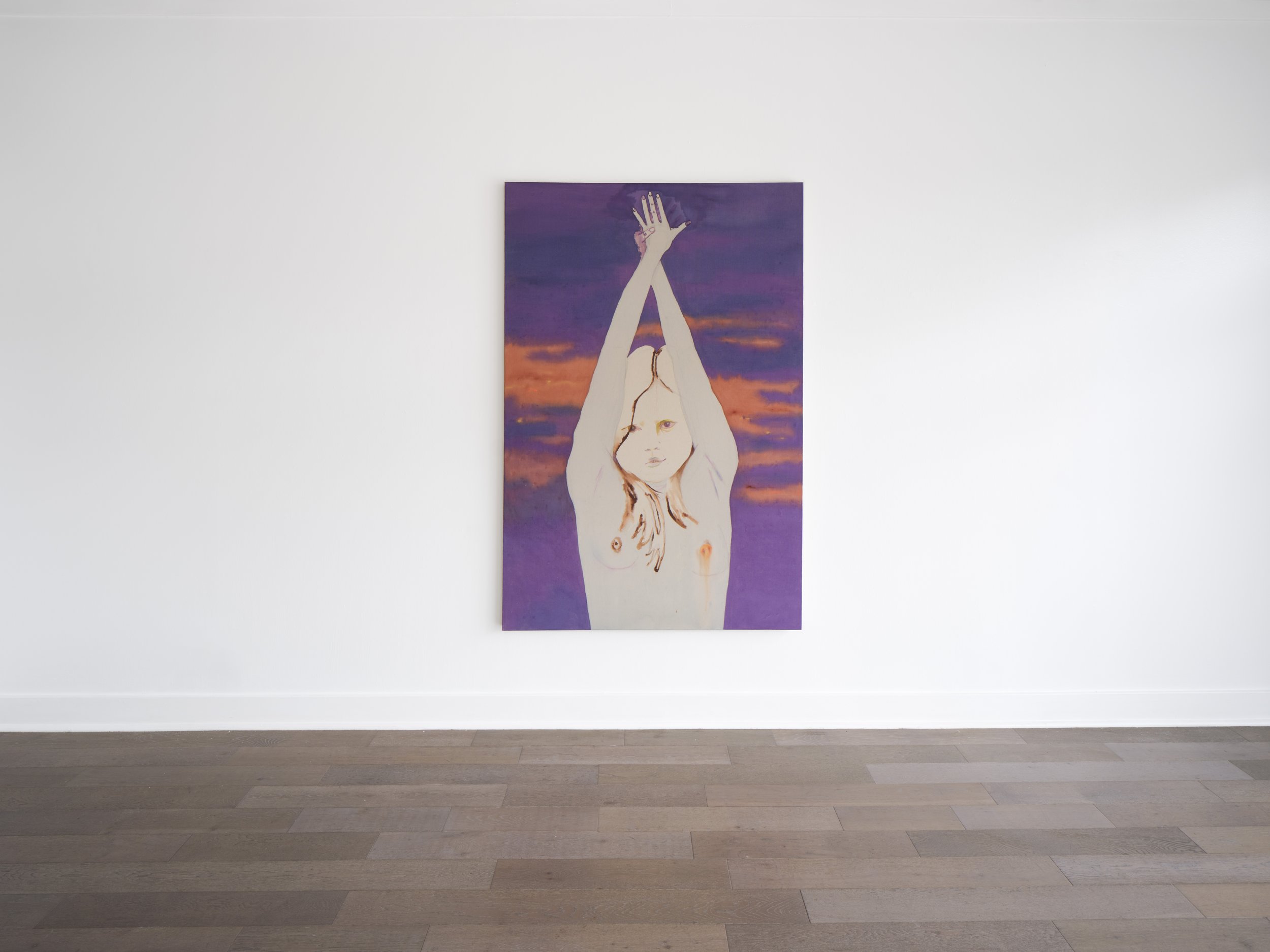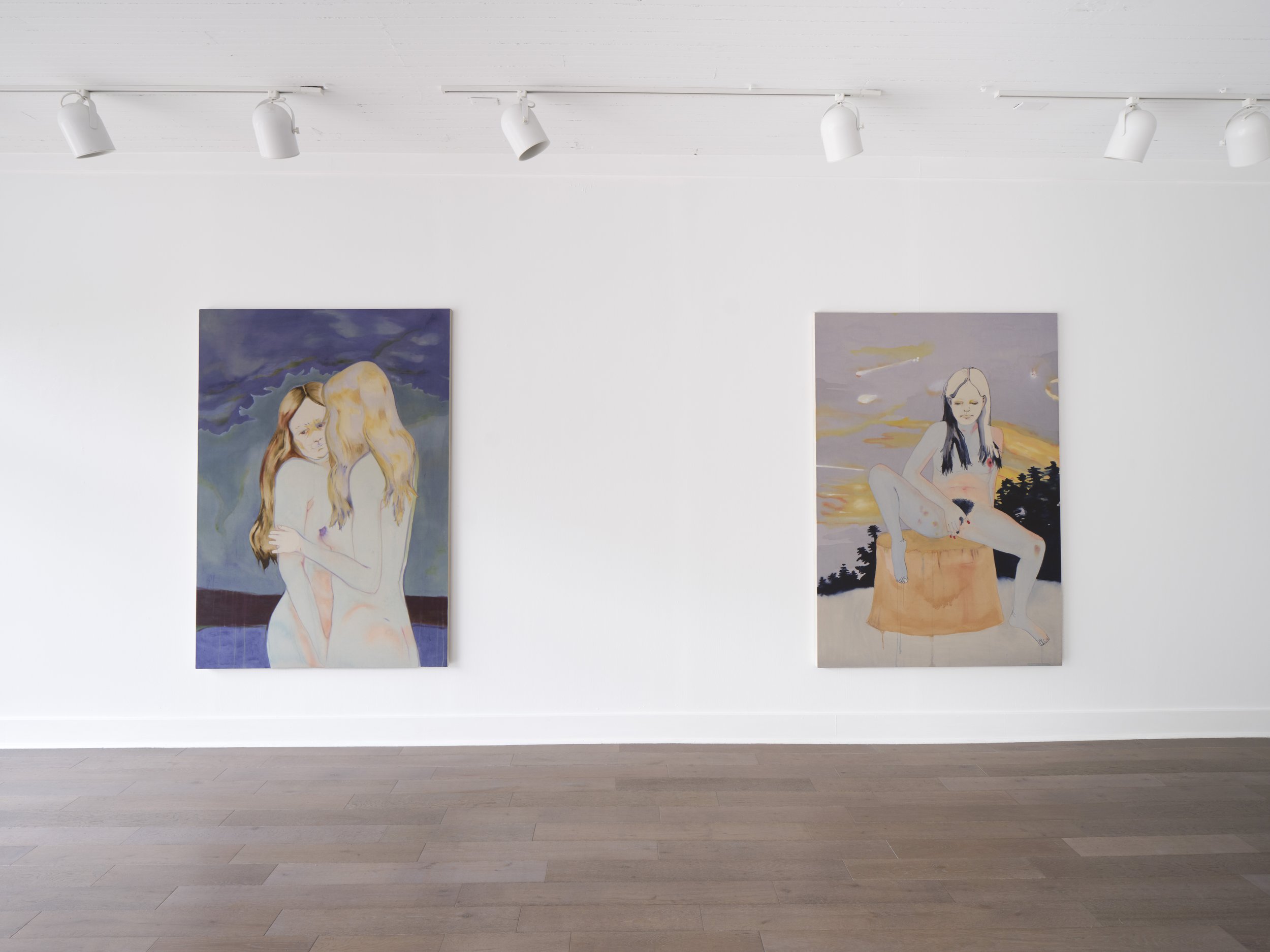


The figures’ flat, crisply outlined forms contrast with the washes of thinned colors that streak the skies behind them. This juxtaposition lends them a relative solidity, despite the lack of modeling defining the women’s forms, a rejection of the traditional, illusionistic rendering of female flesh--soft but firm, begging to be touched-- through which a painter creates desire for a subject. the combination (and conflation) of female nudes with landscapes likewise recurs throughout art history, bodily curves echoed in rolling hills and reproductive fecundity suggested by blossoming flowers or ripe fruit. In his last work, Étant donnés 1° la chute d'eau, 2° le gaz d'éclairage . . . (Given: 1. The Waterfall, 2. The Illuminating Gas . . ., 1946-1966 ), Marcel Duchamp united these tropes to create the ultimate “nude in a landscape” image, a three-dimensional tableau of a reclining female nude, legs spread, lying on a bed of twigs before a backdrop featuring a rushing waterfall. The scene is viewed somewhat voyeuristically through two binocular peepholes in an old wooden door, subverting the monocular view of a single-point perspective, and instead recalling the nineteenth-century stereoscopic viewing devices that combined two photographs to produce a three-dimensional effect.
in contrast, Howe’s female figures remain distinctly apart from their landscape settings, and resistant to a desiring gaze. Howe first translates her source photographs to loose sketches to work out compositions, then to acrylic paint on unprimed canvas, sometimes with visible underdrawings. Twice removed from the photographic original, Howe’s figures retain a distinct sense of interiority or autonomy that echoes the show’s title, “I Feel Alone, I Feel Alive.” Most notably, the protagonist of Girls on a Mission remains absorbed in an exploration of her body, revealing neither awareness of observation, nor any particular pleasure in her undertaking. The same viewpoint recurs in Sunset Burnout, in which the female subject evenly meets our gaze, arms raised against the sky. Howe humorously nods to the tradition of parallels between women and landscape in Civil Dusk, in which a circle of women gather under a purple sky on a v-shaped thatch of grass that echos their pubic hair, yet only one of them turns to regard us, creating a distinct sense of unwelcome. We can only see the face of one of two of the nude women--embracing? sharing secrets?--in Little Excercise and are left to construct our own meaning from the vaguely troubled look on her face. These indeterminate visual narratives echo the opacity and uncertainty of many women’s sexual experiences: neither good nor bad, intimately connected to another and yet alone, and occasionally absurd. In creating female nudes that resist sensuality, Howe creates space for exploration, for living.
Text Written by Claire Howard







